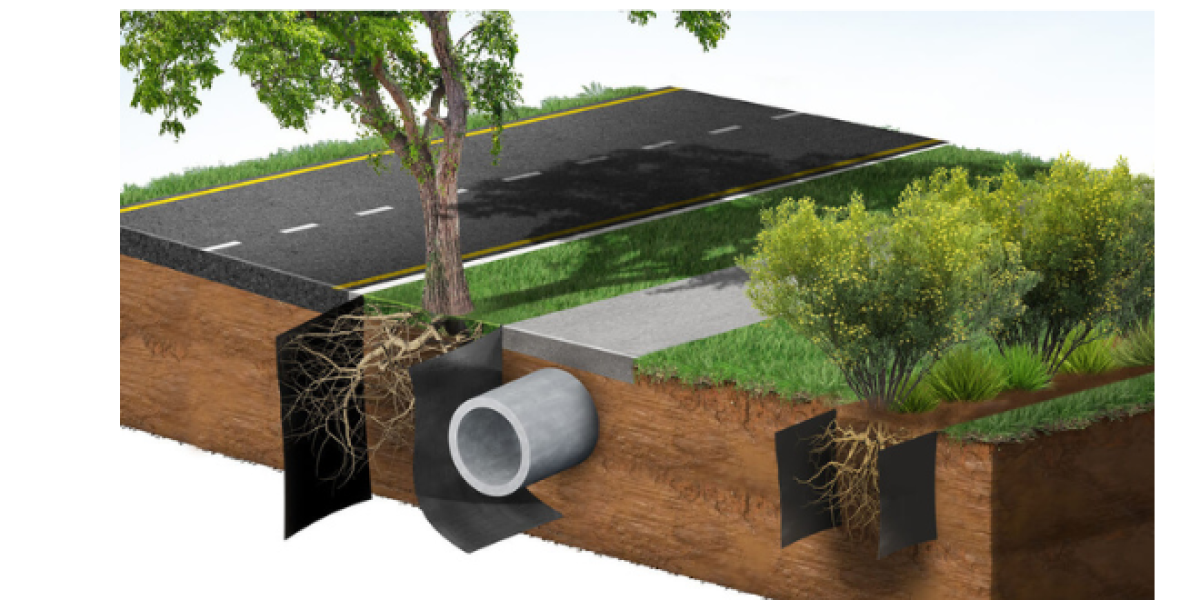Root intrusion can cause significant damage to infrastructure, such as foundations, sidewalks, and underground utilities. Additionally, uncontrolled root growth can negatively impact neighboring plants in landscaped areas. High-Density Polyethylene (HDPE) root barriers have emerged as an effective solution Pulkit Plastic Products for managing root systems, providing a durable and eco-friendly way to protect both plants and structures.
In this guest post, we’ll explore the applications, benefits, installation processes, and common questions about HDPE root barriers. By the end, you’ll understand why HDPE is the preferred choice for managing root growth in both residential and commercial projects.
What is an HDPE Root Barrier?
An HDPE root barrier is a flexible yet sturdy membrane made from high-density polyethylene, designed to restrict the growth of plant roots. By redirecting roots downward or away from sensitive areas, these barriers help maintain a healthy balance between plant growth and infrastructure integrity.
HDPE root barriers are highly resistant to punctures, tears, and environmental degradation, making them an ideal choice for long-term use. Available in various sizes and thicknesses, they are suitable for a range of applications, from small gardens to large-scale urban developments.
Applications of HDPE Root Barriers
- Urban Landscaping
HDPE root barriers are commonly used in urban settings to prevent roots from damaging sidewalks, roads, and underground utilities. - Residential Gardens
In home gardens, root barriers help maintain separation between invasive plants and delicate landscaping, ensuring aesthetic appeal and plant health. - Agriculture
Farmers use Root barrier HDPE barriers to control the spread of root systems in crops like bamboo or trees, preventing competition for nutrients and water. - Construction Projects
During construction, root barriers protect building foundations and underground structures from damage caused by aggressive root growth. - Golf Courses and Parks
HDPE root barriers maintain clear boundaries between grass areas and surrounding trees or shrubs, ensuring consistent turf quality.
Benefits of Using HDPE Root Barriers
- Infrastructure Protection
HDPE root barriers prevent roots from damaging sidewalks, driveways, pipelines, and foundations, saving significant repair costs. - Environmentally Friendly
Made from recyclable materials, HDPE root barriers contribute to sustainable landscaping practices. - Durability
HDPE barriers are resistant to UV rays, moisture, chemicals, and microbial degradation, ensuring a long lifespan even in harsh conditions. - Ease of Installation
Lightweight and flexible, HDPE root barriers are easy to install and adapt to various project requirements. - Cost-Effective
With their durability and low maintenance needs, HDPE Root barrier sheet offer a cost-effective solution for long-term root management. - Improved Plant Health
By redirecting roots away from restricted areas, HDPE barriers promote healthier root systems and overall plant growth.
Installation Process for HDPE Root Barriers
- Site Assessment
Identify the area requiring root control and measure the length and depth needed for the barrier. - Trenching
Dig a trench along the designated boundary, ensuring it is deep enough to accommodate the barrier and block root growth effectively. - Barrier Placement
Place the HDPE root barrier into the trench, ensuring that it extends at least 2-3 inches above ground level to prevent roots from growing over it. - Backfilling
Refill the trench with soil, compacting it firmly to hold the barrier in place and eliminate air gaps. - Finishing Touches
Trim any excess barrier material and inspect the installation to ensure a secure fit and proper alignment.
Sustainability of HDPE Root Barriers
HDPE root barriers align with eco-conscious landscaping and construction practices in the following ways:
- Recyclable Material
HDPE is recyclable, reducing waste and contributing to sustainable material management. - Reduced Infrastructure Damage
By preventing root intrusion, HDPE barriers minimize the environmental impact associated with frequent infrastructure repairs. - Water Conservation
Barriers guide roots downward, encouraging deeper rooting systems that access underground water sources, reducing irrigation needs. - Chemical-Free Solution
Unlike herbicides or chemical treatments, HDPE barriers offer a non-toxic and safe way to control root growth.
Common Mistakes to Avoid During Installation
- Inadequate Depth
Failing to install the barrier deep enough can allow roots to grow beneath it, defeating its purpose. - Improper Alignment
Misaligned barriers may leave gaps where roots can penetrate, leading to ineffective root control. - Using Thin Material for Aggressive Roots
Choosing a barrier that is too thin for plants with strong roots can result in punctures and failure over time. - Lack of Overlap
When using multiple barrier pieces, ensure proper overlapping and secure joining to prevent gaps.
Future Trends in HDPE Root Barriers
With advancements in technology and growing environmental concerns, HDPE root barriers are evolving to meet modern needs:
- Smart Root Barriers
Innovations are focusing on incorporating sensors to monitor soil conditions and root activity in real-time. - Biodegradable Options
Research is underway to create biodegradable barriers for temporary landscaping projects. - Enhanced Flexibility
Manufacturers are developing even more flexible HDPE barriers to accommodate complex landscape designs. - Customizable Sizes and Colors
Customization options allow for tailored solutions that blend seamlessly into landscaping aesthetics.
Conclusion
HDPE root barriers are an essential tool for managing root growth in a wide range of applications, from urban landscaping to agriculture and construction. Their durability, environmental benefits, and cost-effectiveness make them a preferred choice for both professionals and homeowners.
By understanding their features, installation techniques, and maintenance requirements, you can effectively protect infrastructure and promote healthy plant growth. With ongoing innovations, HDPE root barrier will continue to play a crucial role in sustainable landscaping and development projects.
FAQs About HDPE Root Barriers
1. What thickness is ideal for an HDPE root barrier?
The ideal thickness depends on the type of plant being managed. For small to medium-sized plants, a thickness of 1 mm to 1.5 mm is sufficient. For trees with aggressive roots, a thicker barrier, such as 2 mm or more, is recommended.
2. How long do HDPE root barriers last?
HDPE root barriers can last 50 years or more, depending on environmental conditions and proper installation. Their resistance to UV rays, chemicals, and punctures ensures long-term reliability.
3. Can HDPE root barriers harm plants?
No, HDPE root barriers are designed to redirect root growth without harming plants. By guiding roots downward, they encourage deeper rooting, which can enhance plant stability and access to water.
4. Are HDPE root barriers suitable for bamboo control?
Yes, HDPE root barriers are an excellent choice for managing bamboo, which has aggressive rhizomes that can spread rapidly. The barriers contain and redirect bamboo roots, preventing unwanted spread while allowing controlled growth.












